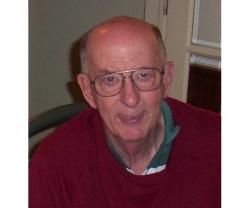
David Muir was a physician whose early physiological research into airborne particles led him to a career in occupational medicine in Scotland and then McMaster university in Canada, where he became a leader in the profession.
David’s early medical years were in London. He won the Broderip scholarship on qualifying from the Middlesex Hospital Medical School in 1954. After his house jobs there and his National Service in East Africa, he trained in internal medicine and completed a PhD at the Hammersmith Hospital in 1966, on the behaviour of fine aerosol particles in the lung. This was an era of great interest in the subject in relation to air pollution and dust diseases such as pneumoconiosis. His work on deposition of dusts in the lung was ground-breaking and attracted the attention of the UK National Coal Board’s medical service, and in 1968 he was recruited to head its physiological research unit in Edinburgh, which from the next year became part of being the newly formed Institute of Occupational Medicine. He was promoted Director of the Institute in 1973.
The main role of the IOM at that time had been to produce scientific data on which an occupational exposure standard could be based to reduce risks of both pneumoconiosis and impairment of lung function in the coal industry, a far-sighted recognition by his predecessor as Director, Dr John Rogan, that the two might be concurrent but separate responses to dust inhalation. The research was based on a lung term programme that studied some 50 000 miners over decades, recording symptoms, radiographs, lung function and, crucially, exposure to respirable dust. Significantly, it was multidisciplinary from the start, involving medical teams with occupational hygienists, physicists, chemists and statisticians. This work led to successful implementation of coal dust standards in UK and USA during David’s time at IOM.
By the late 1970s there was a feeling that IOM had completed its work, and its continued existence was threatened. David was recruited in 1977 to a professorial chair at McMaster University in Ontario, in order to direct a new Occupational Health Program. This included an innovative Diploma, based on the McMaster system of problem-based learning and was open to doctors, nurses and other relevant professionals. His course stressed the importance to occupational health of collaboration with both management and workers’ representatives.
Throughout his time in Edinburgh, he had worked part-time as a chest physician and he continued his clinical interest in occupational disease in Canada alongside his research on aerosols. His experience of epidemiological research led to his carrying out important studies of the dusty industries in Canada, most importantly hard rock mining, glass fibre production, and nickel production. As in IOM, the data derived from his team’s studies at McMaster has played an important role in the setting of occupational standards to protect workers’ health. They also contributed greatly to standardisation of methods of dust exposure measurement and radiological assessment in epidemiology.
David combined his academic research with an active teaching interest. His effectiveness as a teacher is attested to by his postgraduate students, many of whom became themselves distinguished practitioners. His clinical work led him to take an interest in fairer methods of compensation of workers for industrial disease and recognition of those conditions, such as chronic obstructive pulmonary disease, where dust exposure is one of several environmental and genetic risk factors. He served on many committees related to occupational health in Canada and his status was recognised by his Fellowship of three Royal Colleges of Physicians, London, Edinburgh and Canada, and of the UK Faculty of Occupational Medicine. Towards the end of his career, he studied for an MSc in epidemiology from his University, demonstrating that age is no bar to self-improvement.
David retired to an Emeritus Professorship at McMaster in 1996. His retirement was a long and happy one with his wife Gisele. They had three children and four grandchildren. He was a good pianist and an enthusiastic bridge player and kept physically active with swimming and golf. He lived long enough to learn that his old employer, the IOM, had succeeded in becoming a self-funding charity and celebrated its 50th anniversary in 2019, outlasting its founder, the National Coal Board. He died peacefully aged 89 in 2021.
Anthony Seaton
